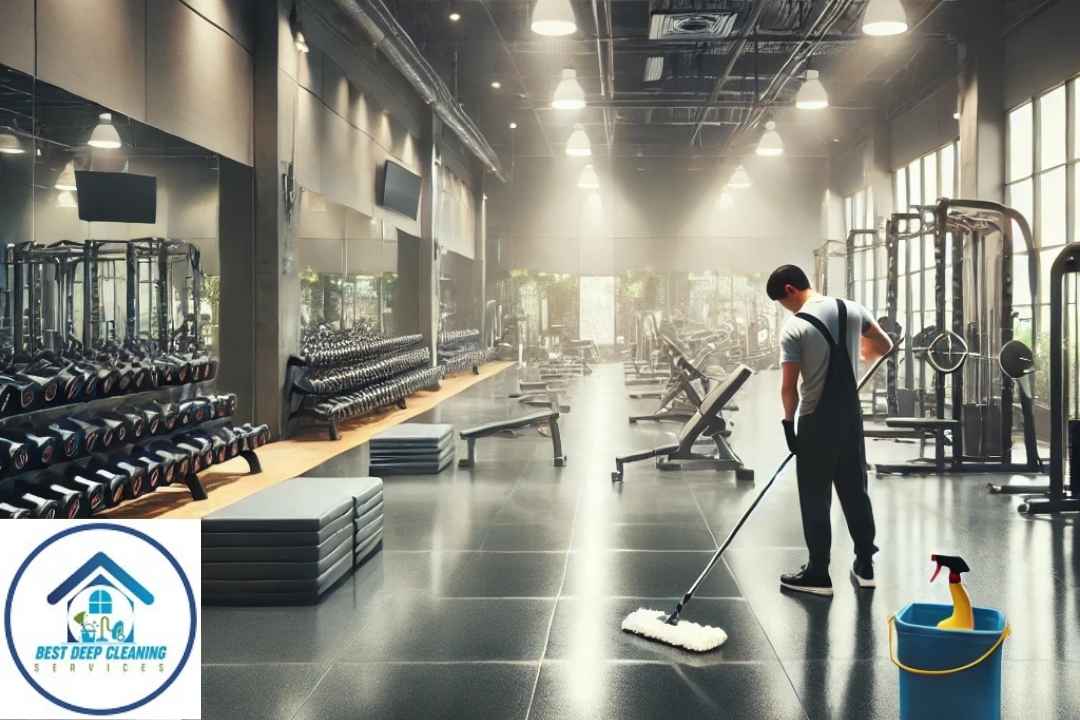When it's time for a deep cleaning process, you're about to tackle a big task that requires a solid plan. Start by assessing the space you want to clean and think about what needs to be done.
You'll need to declutter, choose the right equipment, and apply effective cleaning techniques. But before you begin, take a moment to consider the tools and strategies that will make the biggest impact.
What are the most stubborn stains you'll need to tackle, and what's the best way to remove them? The answer to that question is where you should focus your efforts next.
Preparing the Cleaning Area
When it comes to deep cleaning, you're off to a good start by focusing on the space itself – before you even pick up a cleaning tool. Start by removing any breakable or valuable items from the area to be cleaned. This will prevent them from getting damaged or lost during the cleaning process.
Next, cover your floors and furniture with drop cloths or plastic sheets to protect them from dirt, dust, and cleaning solutions.
You'll also want to turn off the electricity to any outlets or switches in the area, and unplug any appliances or electronics to prevent accidents. Take down any curtains or blinds to prevent dust and dirt from accumulating on them.
Open windows for ventilation, and use fans to circulate the air and speed up the drying process.
Lastly, gather all the necessary cleaning supplies and tools in a central location, so they're easily accessible throughout the cleaning process. This will save you time and effort in the long run, allowing you to focus on the actual cleaning tasks at hand.
Decluttering and Organizing Space
Deep Cleaning Process
Decluttering and Organizing Space
Dive into the decluttering and organizing process by tackling one area at a time. This approach will help you stay focused and avoid feeling overwhelmed.
Start by clearing everything out of the space you're working on, including furniture, if possible. This will give you a clean slate to work with.
Sort items into categories, such as "keep," "donate," and "discard." Be ruthless – if you haven't used something in a year, it's probably safe to get rid of it.
Consider the 80/20 rule: 80% of the time, you likely only use 20% of your belongings. Use this as a guideline to help you decide what to keep and what to let go of.
Once you've purged your unwanted items, organize what's left in a way that makes sense for the space.
Assign a home for each item, and make sure it's easily accessible. This will help maintain your newly organized space and make future cleaning tasks easier.
Choosing the Right Equipment
You'll frequently find that having the right equipment makes a huge difference in the efficiency and effectiveness of your deep cleaning process. Investing in a few essential tools can help you tackle tough cleaning tasks with ease.
Start by gathering a variety of cleaning solutions and disinfectants that cater to different surfaces and tasks. For instance, you'll need a gentle cleaner for delicate surfaces, a heavy-duty cleaner for tough stains, and a disinfectant for high-touch areas.
In addition to cleaning solutions, you'll need a range of cleaning tools. A vacuum cleaner with various attachments is a must-have for cleaning floors, upholstery, and hard-to-reach areas. A mop and bucket are essential for cleaning large areas, while a dustpan and brush are perfect for tidying up small spaces.
Don't forget to include a microfiber cloth, scrub brush, and sponges in your cleaning arsenal. Having the right equipment at your disposal will save you time and effort, allowing you to focus on the actual cleaning process. By choosing the right equipment, you'll be well-prepared to tackle any deep cleaning task that comes your way.
Effective Cleaning Techniques
Deep Cleaning Process
Effective Cleaning Techniques
Having the right equipment at your disposal is only half the battle; now it's time to put these tools to use with effective cleaning techniques. You'll want to start by dusting and vacuuming all surfaces, working from top to bottom to prevent dirt and debris from spreading to clean areas.
Use a microfiber cloth to dust furniture, fixtures, and electronics, as it will pick up dirt and dust easily without leaving streaks or residue.
Next, focus on cleaning high-traffic areas and stubborn stains on floors and surfaces. Use a gentle cleaning product and a scrub brush to work out tough stains, and avoid using abrasive materials that can damage surfaces.
When cleaning surfaces, use a 'cleaning zone' approach, dividing large areas into smaller sections to maintain organization and efficiency. This will help you stay focused and ensure that all areas receive the attention they need.
Use long, overlapping strokes to clean large surfaces, and change cleaning solutions frequently to prevent dirt and grime from being redeposited onto clean areas. By following these techniques, you'll be able to effectively clean your space and set yourself up for success in the sanitizing and disinfecting process.
Sanitizing and Disinfecting Surfaces
Completing the cleaning process is just the first step; maintaining a hygienic environment requires regular sanitizing and disinfecting. You'll need to sanitize and disinfect all surfaces, especially high-touch areas like doorknobs, light switches, and countertops.
To sanitize, you'll mix a solution of water and a sanitizing agent, such as bleach or vinegar. Dip a cloth into the solution, wring it out thoroughly, and wipe down all surfaces.
Make sure to follow the manufacturer's instructions for the recommended dilution ratio and contact time. For disinfecting, use a disinfectant spray or wipe and follow the same process.
When disinfecting, it's essential to let the solution sit on the surface for the recommended amount of time to allow it to effectively kill bacteria and viruses.
You should also pay attention to areas around sinks, toilets, and floors, as these are common breeding grounds for germs and bacteria.
Regular sanitizing and disinfecting will help prevent the spread of illnesses and keep your space clean and hygienic.
Frequently Asked Questions [FAQs]
How Often Should I Perform a Deep Cleaning Process?
You'll know it's time to give your space a thorough overhaul when clutter builds up and usual cleaning isn't enough. Typically, this is every 1-3 months, but it depends on your lifestyle and personal preferences.
Can I Use Homemade Cleaning Solutions for Deep Cleaning?
You can definitely use homemade cleaning solutions, they're often cost-effective and eco-friendly. For tough jobs, mix baking soda and vinegar for a natural scrub or use lemon juice as a disinfectant in your deep cleaning routine.
How Do I Clean Hard-To-Reach Areas Like Ceiling Fans?
You're tackling those hard-to-reach areas like ceiling fans. Use a long-handled duster or a vacuum with an extension wand to reach high spots. Turn off the fan and start dusting from the top down for best results.
Are There Eco-Friendly Alternatives for Deep Cleaning Products?
When it comes to cleaning, you're likely looking for eco-friendly alternatives to harsh products. You can opt for natural cleaners like baking soda, vinegar, and lemon juice, which are effective and environmentally friendly options.
What Are the Safety Precautions for Deep Cleaning Chemicals?
When handling strong chemicals, you ensure your safety by wearing protective gloves, goggles, and a mask. You also ventilate the area and follow instructions to avoid skin contact and inhalation of toxic fumes.
Conclusion
By dividing large areas into smaller sections and focusing on high-traffic areas and stubborn stains, you'll be able to tackle even the toughest deep cleaning tasks. Remember to maintain your newly cleaned space by assigning a home for each item and establishing a regular cleaning routine.
This will help keep your space organized and clean, making future deep cleaning processes easier and more efficient. Stay on track and keep your space looking its best.






